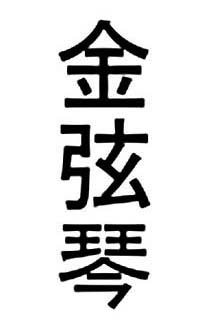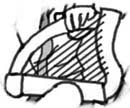The story goes that after years of vain searching for enlightenment, the Buddha found himself on a river bank where he overheard a music teacher on a passing boat instructing his student. “If you tighten the string too much, it will break. If you do not tighten it enough, it will not play.” In an instant the Buddha saw the truth of the Middle Way, and this lead to his meditation under the Bodhi tree where he found enlightenment.
One wonders that music teachers do not make more of this role their knowledge played in the development of the world’s philosophical and religious teaching.

In the case of the music teacher the particular instrument is a given and so its string lengths are fixed. As would have been the case with most music of antiquity the student would be little concerned with absolute pitch, so given the fixed string length the musician was free to tune the instrument to whatever pitch had the most pleasing sound. We have extant records of lute players being instructed to tune the treble-most string until it bids fair to break and tune the other strings to match it, which dispels any notion of a standard pitch.
The teacher’s middle–way admonition reminds the student that while varying the tension of the string changes the pitch, it does so only for a rather narrow range of notes. Below that range the string will not play and above that range the string is liable to break.
As the boat drifts beyond the hearing of the Buddha, let us imagine that the music teacher elucidates, explaining to the student that he means to point out the two extreme situations: first where the string is tuned so tightly it reaches 100% of its maximum possible tension and thus breaks, and second where the string is completely lax, is at 0% of its maximum tension, and makes no sound whatever. The teacher might well have also pointed out that long before the string reached the breaking point, the sound of the string would lose much of its character and flavor as it was tuned beyond the most pleasing range of notes possible for it. And likewise as the tension is lessened the musical quality of the sound of the string disappears long before the tension reaches zero.
Even in the range of notes that sound good for that string, the quality and characteristic of the sound will vary depending on the tension applied to the string; that is, how tightly the student winds the string. That teacher of long ago did not need to deal in numbers, and happily most of the time we don't either because we can hear the difference in the sound as we tighten or loosen a musical string . But the numbers exist nonetheless. That one sweet sound for the string on any instrument can be described as a percent tension it would take to break the string. It is a number somewhere between 100 and 0, somewhere between “If you tighten the string too much, it will break. If you do not tighten it enough, it will not play.”
Now, had the boat been transporting a luthier and his student, the Buddha would likely have heard instead, “If you make the string too long, it will break. If you do not make it long enough, it will not play.” No telling how history would have been changed had this been the case, unlikely for the better. Nonetheless exploring this side of the story just might enlighten us concerning some of the verities and realities of wire harp strings.

Kanji rendering for wire–strung harp: metal—string—koto (Japanese harp)
If the string length is fixed but the absolute pitch is not, as is the case with our music teacher on the river, the “sweet spot” where the string sounds the best is obtained by changing the tension of the string, winding it tighter or looser, until the sweet spot is heard. In this case we are not concerned that the pitch changes as we tighten the string. But in the case of the luthier who is charged with making an instrument that plays a certain range of notes, it matters a very great deal that the pitch changes as the string is tightened.
For this reason the luthier designing and making an instrument so that the string for a given pitch falls within that sweet spot must make the string the right length. If the string is too long, it will break before it gets to the desired pitch; if it is too short, it will play at the desired pitch while still too lax to have any pleasing quality to it, if indeed it plays at all.
The reality of musical strings is that you can raise the pitch in one of two ways: make the string tighter or make the string shorter. You can lower the pitch in one of two ways: make the string looser or make the string longer. Pitch, length, and tension are interrelated.
The music teacher in this story has an instrument with fixed string lengths but is unconcerned about absolute pitch so he addresses himself to making the instrument sound good by finding the right tension. The luthier in our alternate story is making an instrument with strings of a more or less fixed pitch and certainly fixed in their relationship to each other so he addresses himself to making the instrument sound good by finding the right string length.
You will notice though that the teacher does not say, “If he string is too thin, it will break. If the string is too thick, it will not play” or vice versa. If the student were skeptical, the teacher might invite him to replace a functioning string with one as thin as a hair and another as thick as a noodle and the student would find that when he brings that string up to the original pitch, no matter what the thickness (gauge) of string, it will neither fail to play nor will it break. In fact the quality of the sound will be essentially unchanged.
An overly thick string might bid fair to break the instrument but the string itself will not break.

Had the accidental listener not had his mind on the eternal verities and instead had been a harper (if indeed there is a material difference), he might have seen in that transcendental moment that since a string too long or too tight will break while a string too short or too loose will not play, and the quality of the sound of the string depends upon where it is between those extremes, and since it is not possible to cause a string to break or fail to play no matter how the thickness is changed, then the thickness of the string does not affect the quality of the sound. And thus the harper would achieve String Enlightenment.
As with all such revelations the path is fraught with illusions. Changing the gauge of one of the strings of a harp changes the total tension of the harp and thereby changes the dynamics of the whole harp. Since it is now essentially a different harp than it was a few minutes ago, the sound of that string is changed somewhat (as indeed is the sound of the adjacent strings if not all all the strings). This can give rise to the illusion that changing the gauge of the string changes the characteristic sound of the string when in reality what we are hearing is the dynamic change in the harp as a whole.
The teacher also does not say “If the string is too dense (too high specific gravity), it will break. If the string is not dense enough, it will not play” although this is indeed so. A denser string requires more tension to sound at the same pitch and so if we increase the specific gravity of the string enough, we will eventually exceed the maximum tension and the string will break.
Likewise a less dense string requires less tension to sound at the same pitch and so if we decrease the specific gravity of the string material enough, that tension is so close to zero that the string does not sound at all. In the real world a change in density is accomplished by changing the string material. Iron is slightly less dense than brass which means that if we find that our brass string is just a little too long for a particular pitch, we can substitute an iron string for it and the lower tension of the string to achieve that pitch means that the iron string will not be in as much danger of breakage. Likewise if we find that our brass string is just a little to short for a particular pitch, we can substitute a silver string and the higher tension of the string to achieve the same pitch means that the silver string will not be too lax to play at all. The teacher is not heard addressing the density of the string material not because it is not valid but because it is not significant. Changing the string material only changes the characteristics of the string a little compared to the inconvenience it entails and unless the harp was designed specifically for those types of strings, it is a poor substitute for adequate string lengths to begin with.
Wire harp players soon or late are faced with looking at their harp, or a prospective harp, and coming to some conclusions about it. The harper who is enlightened about the nature of harp strings need not be content to remain in fog of awe and mystery and defer those conclusions to experts. It’s really rather simple. The thing that far and away determines the characteristic sound of the string of a wire harp more than any other factor is its length. Between the extremes of a string so short that it is too lax to play and so long that it breaks before it can come up to pitch is the middle–way, the length at which that string sounds sweetly. Changing the gauge of the string will not affect this, for a particular pitch that length will be the same no matter what the gauge of the string. The reality of the fixed length of the string can be mitigated a little by changing the string to a material that is less dense or more dense but unless the harp was specifically designed for that material, it is a poor substitute for thoughtful design.

By all means listen to what those with splinters under their nails and and hands permanently curved to fit a chisel have to say. And then do the math yourself. With the tools available it is safe to say that if you can play a wire harp, you can handle the math too. But before that, simply look at the profile outline of any wire strung harp keeping in mind that the strings are reaching out for that middle–way and listen to the voice of the sagely harper on the boat, “If the string is too long, it will break. It the string is too short, it will not play.”
Submitted by James Skeen, 21 May, 2013
Illustration by Alethea Skeen
Except where otherwise noted, content on this site is licensed under a Creative Commons License.
Permissions beyond the scope of this license may be available by contacting us at editor@wirestrungharp.com.
